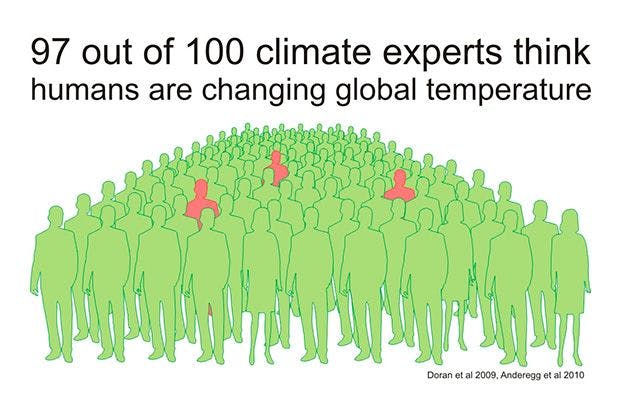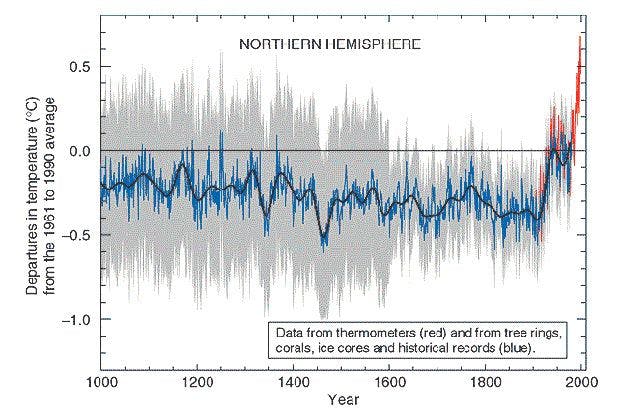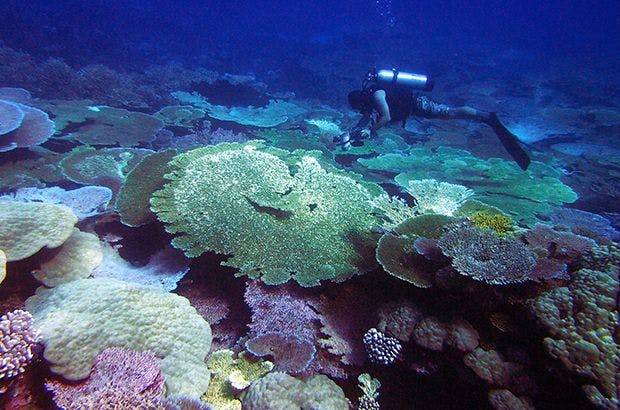Interviews, Nature, Science & SkepticismClimate Change and the Oceans

You may consider the topic of climate change to be beyond the remit of an online surf publication, or a potentially contentious issue for us to cover. We see it as neither irrelevant, nor contentious. Global warming as a result of increased concentrations of CO2 in the atmosphere due to the burning of fossil fuels is something that 97% of scientific literature on the topic agrees on: the rise in CO2 is human driven, and impacting our planet. Surfers are ocean users and, often, global travellers and consumers which places us both in the line of fire and behind the trigger.

Professor Daniel Sigman from the Geosciences Department at Princeton University was a recent guest at Surf Simply, and was kind enough to record an interview with Ru Hill and Harry Knight that aired on episode 39 of the Surf Simply podcast. Professor Sigman is a bio-geo-chemist who studies the interconnections between life and Earth processes, and in particular the links between life and climate. His area of expertise is in the study of the ocean and the global carbon dioxide cycle, and he teaches about the scientific basis behind ongoing climate change.. We were interested to hear about the role that the world’s ocean has to play in the carbon dioxide cycle and how it is being and will be impacted by climate change. We also wanted to ask if there was any cause for optimism in the face of such an obvious and seemingly insurmountable environmental crisis.

The ocean is the ultimate fate for fossil fuel CO2.
The ocean is a tremendously large reservoir of a fluid, and CO2 is highly soluble in it. As a result, the ultimate fate for fossil fuel CO2 will be to dissolve in surface waters, be mixed down into the deep ocean, and finally consumed by reaction with limestone sediments on the deep seafloor.

The oceans can’t remove carbon dioxide from the atmosphere as quickly as we’re putting it in.
When human activity results in carbon dioxide entering the atmosphere, within the first year, 50% stays in the atmosphere, 25% goes back into the terrestrial biosphere (through plant growth) and 25% is absorbed by the oceans. The uptake by land plants, when it was discovered, came as something of a surprise although in retrospect there are explanations for it – including CO2 fertilization of plants. While this land plant uptake of carbon is currently very important, its future is uncertain, with the likelihood that it will eventually stop and possibly reverse. This leaves the ocean as the only reliable uptake term and the process that will eventually bring atmospheric CO2 levels back to those found prior to human industrialization. But as is clear from the percentages above, this ocean uptake is too slow to prevent CO2 rise as long as humans are burning fossil fuels at anything like current rates. Only after we substantially reduce fossil fuel burning will atmospheric CO2 concentrations begin to tail off toward the lower “preindustrial” levels. The problem is the length of that tail, which is hundreds to thousands of years because of the slow rate at which surface waters mix with the deep ocean (which constitutes most of the volume of the ocean). In short, most of the CO2 that we put into the atmosphere now will be with us for more than our lifetimes. Scientists are trying to narrow down the time scale of uptake given ocean circulation as it occurs today. Sigman has been studying past climate and CO2 changes to understand how ocean circulation may respond to climate and thus affect the rate of ocean carbon uptake.

There is a negative biological impact of CO2 absorption by the ocean’s surface waters.
Surface waters absorb atmospheric carbon dioxide as carbonic acid, which is acidifying (lowering the pH of) the shallow waters of the ocean. Lower pH inhibits calcifying organisms — such as corals and shellfish — from combining dissolved carbon with calcium to form their limestone skeletons and shells. There are dire predictions from the scientific community (in particular, coral biologists) for the prospects of coral reefs over the next 30-50 years. If the mixing of surface and deep ocean waters could be accelerated, then surface ocean acidification could be ameliorated; however, there is no clear way for humans to purposefully accelerate this mixing. Humanity, unfortunately, is very accomplished at accidentally impacting global processes, but modifying the ocean so as to robustly achieve a desired circulation change is beyond our capabilities. Much as we cannot control the weather or large-scale geological events, we cannot speed up the mixing of ocean waters – at least not in a purposeful, predictable, significant way.
It is difficult to predict the outcome of humanity’s experiment with our climate.
“I am a technologist. I believe that we are going to need technology to get us out of this bind.”
As for what can be done, there are many approaches to this. We have the potential to develop technologies for producing carbon-free energy, as well as for capturing the carbon from the burning of fossil fuels and potentially from the atmosphere itself (sometimes referred to as “CO2 scrubbing”).
Beyond being efficient in personal energy consumption, individuals can also consider their agency as a political force, and their ability to affect the policies of their country in the context of low carbon energy technologies.
There is little controversy in scientific opinion on this topic.
Scientists as a group and as a profession tend not to want to present a unified front on any particular topic. The natural instinct of most scientists is to be skeptical and to try to disprove theories, especially those of their fellow scientists. Scientists as a community could not be more poorly designed to represent a consensus…. That being said, [among the scientific community,] there is no doubt that the carbon dioxide rise is human driven. No doubt. None.”
The greenhouse effect itself is a robust phenomenon that is central to climate, be it natural or human-perturbed. Without the natural greenhouse effect, Earth would be too cold for liquid water; there would be no humans (and no surfing, we suppose!). Differences in the strength of the greenhouse effect explain why Venus is so much hotter than Earth. Given the fundamental importance of the greenhouse effect, it would be a huge surprise if the increase in atmospheric CO2 from fossil fuels did not strengthen the greenhouse effect and thus cause warming. Thus, it is very unlikely that the warming that we are currently seeing is not the result of the well-documented, fossil fuel-driven CO2 rise. In fact, we would have expected more warming than we have so far observed. That the warming is not proceeding more rapidly is mostly due to the fact that the ocean is taking up heat and slowing down the warming. But, in a way, this is bad news: even if atmospheric CO2 stopped rising today, the atmosphere and ocean would continue to warm until they reach the temperature they should have to match the current strength of the greenhouse effect.
The search for carbon-free energy.
The expansion of solar technology and its decreasing associated costs do provide a ray of hope. Scientists are also studying how fossil fuels can continue to be used to produce energy, with subsequent capture of the carbon dioxide produced as a result of their combustion. That carbon dioxide then needs to be stored away, and there are a number of options for this. Two of these options include facilitating the weathering of rocks, which scavenges carbon dioxide out of the atmosphere, and sequestering captured CO2 in deep sedimentary rocks. Storage in the deep Earth works on the principle that, much as we are able to extract fossil fuels from deep porous storage regions in the Earth’s interior, we could also pump liquefied CO2 back into some of those areas, although there are risks involved and many who oppose this method on the grounds of further human modification of natural processes. Some people advocate utilizing nuclear energy as a “stop-gap” technology whilst solar energy technologies are further developed and improved.
We are probably not centuries away from completely carbon free energy technology, and with the vast majority of the scientific community in agreement about the serious threat posed by global warming as a result of increased concentrations of CO2, we all need to hope that solutions can be developed and implemented sooner rather than later. Given the long residence that fossil fuel-sourced CO2 has in the atmosphere as well as the capacity of current warming to modify the environment, global ecosystems, and sea level in an effectively irreversible way, decisions made right now about fossil fuel use will impact the Earth’s environment and the human race far out into the future.
Infographics licensed from Skeptical Science under a Creative Commons Attribution 3.0 Unported License.